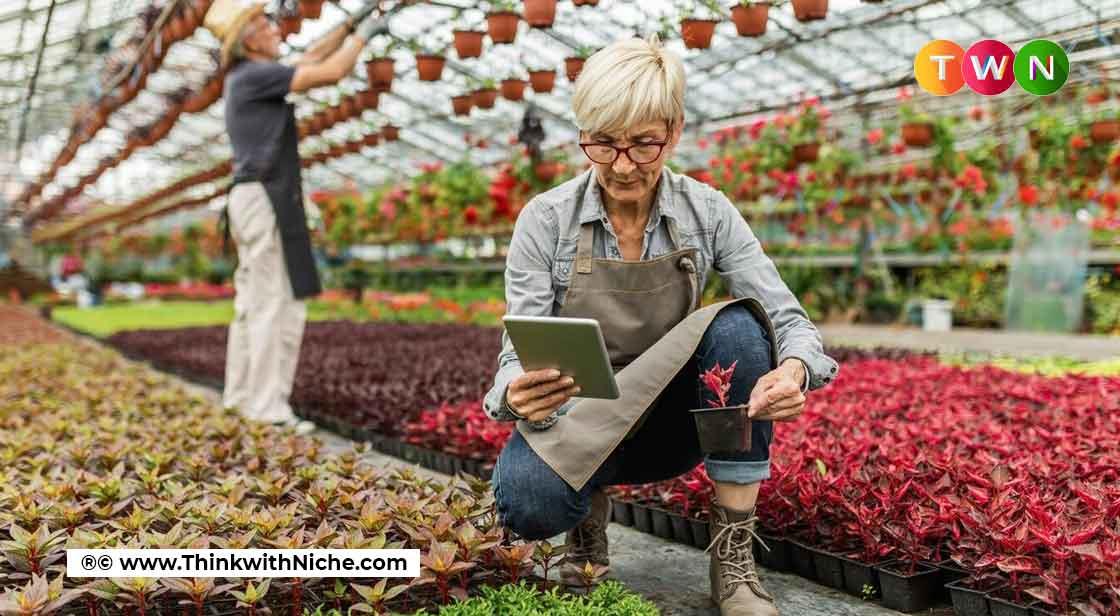How Farmers Are Using Data And Technology To Meet The World’s Food Demand

Blog Post
The United Nations predicts that the world's population will rise by roughly 2 billion people in the next 30 years, reaching approximately 10 billion people. To keep up with rising demand, farming must boost yields on a shrinking land base. #ThinkWithNiche
Climate warming and other environmental issues, paradoxically, need agriculture to substantially decrease its carbon impact. Many other factors, ranging from political insecurity to economic restrictions, contribute to global food insecurity. Despite the reality that yields alone cannot feed the whole world, agribusiness must produce more food with less land, resources, and environmental impact. To make this a reality, technological innovation will be required to enhance the efficiency of food production. Fast Company and Bayer Crop Science hosted a virtual panel discussion dubbed Transformative Innovation, in which experts addressed where agriculture is now, where it needs to go, and how it will get there. The following are a few key takeaways from the event:
The Future Of Agriculture
"Agriculture is highly complicated," says Bob Reiter, Bayer's head of Crop Science research and development. It embraces technology at a breakneck speed.' The mantra "fail fast, learn fast" is entrenched in Silicon Valley start-ups. Innovative approaches and products are used by successful producers to have more control over an uncertain industry. Farmers are already using technologies such as GPS, artificial intelligence (AI), and machine learning to make the best decisions possible for every acre of land they produce. Mr Bridgeforth adds that his company's equipment can collect real-time data, which is then used to improve factors like when and where new crops should be planted. Bridgeforth remembers that farming was formerly considered a pure art form. You're currently combining data from several sources to make the best decision possible. Dr Karen Hildebrand, Amazon Web Service's global agriculture tech leader, feels that growers benefit from more than just cutting-edge technology. Because of improved technology, data is now easier to understand and collect. Farmers may have access to data without using a smartphone by utilising digital equipment that supports voice interaction. There is something you can do if you have filthy hands. Conversational interfaces include questions such as "What are the market conditions today?" and "How much rain do you expect in the forecast seven days from now?" Such factors can have a major influence on a producer's abilities.
Information Share Results In Profits
Farmers would study and experiment across multiple crop cycles to fine-tune their practices. They acquire reams of precise data every day, which they use to power real-time decision-making. The next significant step forward will be made feasible by sharing this data with other farmers, climate scientists, and agricultural professionals. As a consequence, it is possible to develop crops and goods that increase productivity while having the least impact on a particular plot of land. "I feel that's where the big data potential rests," says Reiter. We now have a much better understanding of the environmental data as well as the information coming from the farm, and we're working to create the next-generation solution specifically for [one specific farm]. According to Hildebrand, the key to boosting data sharing is ensuring that "the farmer owns the data and is certain it is secure." According to Reiter, the data must be valuable to both farmers and consumers. Businesses may be able to make more informed decisions as a consequence of data exchange. Growers can prepare for market shifts by researching weather trends in other farms across the world. "What is happening in Brazil, Ukraine, and other global agricultural powerhouses can have an impact on the price that the farmer can obtain," Hildebrand adds. This allows individual farmers to thrive while also ensuring they have a sustainable business strategy.
When Farmers Rely On Data To Meet Consumer Requirements
Farmers may also employ granular data farther down the supply chain. Whenever feasible, merchants like to collaborate with manufacturers who can explain the storey behind their goods to their customers. Bridgeforth was taken aback by a retailer's need to know when and for how long a product was grown or harvested. However, in the modern-day, corporations gather all of these details and give this data to their consumers." An increasing amount of data indicates that consumer food preferences are changing. According to Reiter, food is becoming less of a commodity and more of a specialised product in many ways. As a result, companies like Bayer Crop Science develop products and varieties that are tailored to the unique needs of each customer. "Our food-production systems are continuing to change around the concept of customization," he says. "Consumers aren't just curious about the food; they want it to be more tailored to their needs and goals."
The Economic System
The same method that may be used to produce high-yield cultivars suited to each microclimate can also be used to reduce agriculture's negative environmental impact. Environmental degradation may be rectified with the help of new technologies. When it comes to climate-smart farming practices, the Bayer Carbon Program provides financial incentives to growers that use them. Carbon, as Reiter points out in his book, is ultimately an opportunity for producers. More carbon in the soil is a result of programmes like Bayer's carbon programme, which rewards farmers for using environmentally beneficial practices. "Photosynthesis is the world's largest single source of carbon capture," Reiter says. We need to create a marketplace for carbon offsets to provide financial incentives to manufacturers because there is a demand for them.
You May Like
EDITOR’S CHOICE












